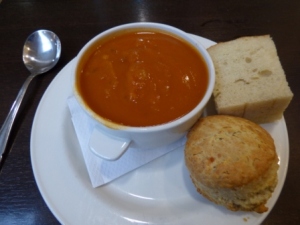An Update
Moving house has been fun. However, it has also been stressful, taken up all my free time and at times, it has created difficulties for me as I struggle with the winter blues and the ongoing issue of depression and exhaustion. Particularly when I learnt that the internet wasn’t being installed for a while, and then when the boiler broke during one of our coldest weeks of the year. Fun fun! Being me, I have taken solace in my usual way. Yes, you guessed it, through connecting with nature.
Whilst the odd sign of spring has shown itself, true spring is still a while off. By true spring, I am of course referring to the start of the butterfly and moth season. My mind wistfully longs for it, and I’ve even been dreaming of Lepidoptera – White Admirals gloriously flutter through my nights, Brown Hairstreaks feed in hot sunshine, whilst Small Coppers are shy and humble amongst wildflower meadows. Spring and summer can’t come soon enough.
Such utterances make it seem like I haven’t found anything worthwhile recently. Which is completely untrue, but I haven’t found all that much in the Lepidoptera department. No, instead, I have contented myself with the beauty of the Avian and Flora worlds.
An unexpected staff illness at National Trust’s Anglesey Abbey during their peak snowdrop season, meant that I was seconded over there for a few days. In addition to testing out the soups and scones of the restaurant team, and keeping track of visitors to their bird feeders, I did my best to learn about their snowdrops (Galanthus). First though, a note about said soups and scones – ever so scrumptious, but I prefer the much cheesier scones at Wimpole. I will also take this time to recommend Anglesey Abbey’s tiffin which is utterly delicious.
As for their avian fauna, it was the usual suspects on the bird feeders, including regular visits by a flock of Long-tailed Tits (Aegithalos caudatus). This species is an ever favourite of mine, despite being so fast-moving and thus difficult to photograph! Most annoyingly, I missed a pair of Crossbills (Loxia curvirostra) that had been reported in the Winter Walk. I went over, with both camera and binoculars, but it seemed they did not want to be seen by me. Oh well, such is life!
Back at Wimpole, I managed to hit a personal record for the number of species seen in a day from the Garden Gate Ticket Office. I had been pleased previously with 12 species, but just last Friday I managed to see a stunning 20 species – including 2 that were new for me in that location: Goldfinches (Carduelis carduelis) and Long-Tailed Tits (Aegithalos caudatus). Of the 12, and then the 20, other species have included Jay (Garrulus glandarius), Nuthatch (Sitta europaea), Buzzard (Buteo buteo) and Goldcrest (Regulus regulus). On Friday just gone, I also saw my first Common Wasp (Vespula vulgaris) of the year, a big beauty that must have been a queen, who buzzed her way around the ticket office until I managed to pot her up and set her free outside.
Now that is all very exciting, but doesn’t quite compare to that of late January / early February when I learnt of a tree that is often favoured by Little Owls (Athene noctua). Having only seen this species briefly and usually at quite a distance, it is fair to say I was desperate to leave the ticket office and see them. Fortunately, I have a wonderful line manager, who also wanted to see them, so off we went! And continuing with the good fortune, the owls posed nicely for a few photos – and have done so again on a couple of days since. I now make a habit of checking aforementioned tree every time I drive into / out of work.
Last week, my line manager and I took a walk into the parkland of Wimpole, discussing some of the history and access that can be pointed out to visitors. In doing so I added some birds to my Wimpole list, and partially worked towards completely my resolution of exploring Wimpole more. New additions to the Wimpole bird list include: Cormorant (Phalacrocorax carbo), Tufted Duck (Aythya fuligula) and Mute Swan (Cygnus olor). Not particularly exciting I suppose, but it is always good to note them down as records.
What else is there to update on? A few new additions to the garden list at the new house for sure, as our bird feeders have been discovered by some of the locals. Again the usual suspects, such as Goldfinch and Greenfinch (Chloris chloris), but wonderful to see them nonetheless. Whilst digging in the garden to create a vegetable plot, my keen eye spotted a couple of caterpillars and beetles (still to be identified), and later, whilst in the shed sowing herb seeds into pots, I found a beautifully and delicately marked slug (promptly relocated to outside, away from the veg plot!).
Gosh, I almost finished without mentioning one of my favourite events of the year! The National Moth Recorders Conference! I attended for the first time last year and had a blast, and this year was no different. In fact, I could dare to say this year was better. I knew more people, allowed myself to buy a book and soap, and … I contributed to a presentation! Alongside three others, I was representing A Focus On Nature with a talk entitled … wait for it … A Focus On Moths! Simon Phelps began by introducing AFON and University Moth Challenge, followed by Laura Richardson on how she had got into moths, followed by Ben Porter who spoke about the importance of mentors. Last of the four, I spoke about the future, young people and moth recording. Due to moving house the week before, I hadn’t really had time to prepare properly, but I felt it went well and was congratulated afterwards by many for giving a good presentation. In conclusion, Simon finished with thanks to those who are supporting AFON, for being invited to speak, and an invite to attendees to get involved (and who could resist such an invite?).
Nervous smiles before our @AFONature talk at #NMRM! pic.twitter.com/TM47OVbC99
— Megan Shersby (@MeganShersby) January 30, 2016
Sadly it is a while yet before the internet is installed in the house, and so, it could be a while before my next post in all likelihood. However, I am sure I shall be kept busy by the local wildlife and you shall be treated to another post before you know it.
For now, here are a few more photos that I have taken recently at Wimpole.




















































































































































































































































































































